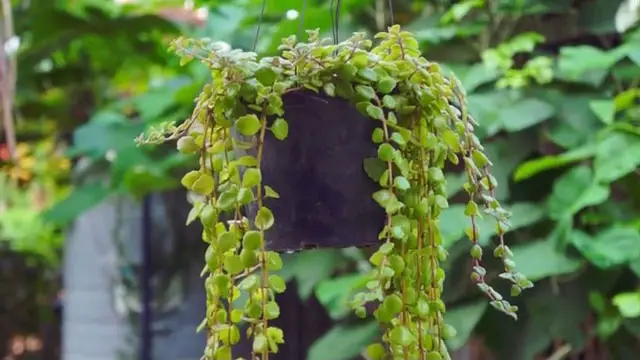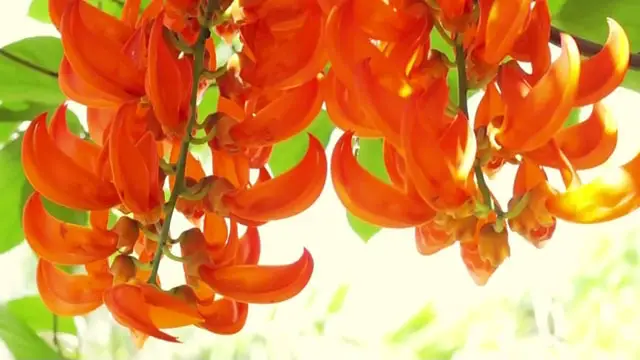Whether it’s about decorating your new home where you have recently moved in, or you have been procrastinating on adding a natural essence to your backyard, plants are indispensable. If you are fond of gardening, you must have perhaps already been fascinated by climbers.
Climber plants create intertwining patterns with other plants in your garden, oozing out a beautiful visual. They take the support of another plant, stick, or fence to grow. Climbers grow vertically or horizontally depending on what variant it is and the surface it entangles themselves with.
Bines and Vines are climbers who have attracted a lot of attention to gardeners. Be it interiors, your windows, balcony, or garden, climbers are a must besides other flowering pots. The best part of bines is that these plants do not require any pots to grow.
Hence, you can easily make space for such plants on any corner of your house. More so, unlike vines, bines do not cling to any surface that they come in contact with. Thus, you can safely provide support to the bines to let them grow at ease.
For growing healthy bines, you first need to choose its residing place. Select the type of garden you would want to plant your climbers in. Next, choose the garden style. You can plan to build cottage-type gardens or kitchen gardens for the bines.
What Grows on a Bine?
Bine and Vine plants almost look similar, especially owing to their growing pattern. You have enough reasons to get confused between these two and thus might be mistaken about what exactly grows on bine and vine.
A bine wraps its stems, while a vine clings to objects using tendrils. Both of these plants seek the help of external support to grow. Bines and vines can both survive storms if they get support from sturdy gazebo frames or garden trellis with robust foundations.
Vines produce a lot of fruits, unlike bines; the common ones who come to mind are tomatoes and grapes. Watermelons and dragon fruits are some widely spotted vine plants across the world.
Bine plants, on the other hand, are extensively used for decorative gardening. Honeysuckles, French beans, pole beans are some common bine plants. Bines are not primarily fruited and are mostly grown for the sake of gardening. You can place some bines across your balcony or windows to create an enchanting environment.
Hops are common to grow on a bine and are widespread in Colonial gardens for beer production.
Honeysuckles is another type of bine plant which the amazing aroma can identify.
You can perhaps notice the fragrance as the first thing if you ever spot a honeysuckle bine in a garden. The beauty of this bine is further enhanced by its flowers which bloom spectacularly. When a honeysuckle blooms, the rich and sweet aroma from it spreads far like perfume. You can spot honeysuckle vines growing wild along with shrubs.
Did you know that wisteria is a bine?
Well, wisterias are part of the pea family. You might have been confused wondering whether this plant belonging to the legume family is a bine or a vine. Wisteria is a woody bine plant. These plants are characterized by soft blue color and an intoxicating fragrance.
The blooms are vibrant lilac-hued and spread a mesmerizing aroma. Wisteria has a sturdy stem that winds while growing and supports the wall using stiff hairs. You might also find Wisteria in lively blue shades.
These plants are attractive and are well suited to Mediterranean climatic zones. These bines require ample sunlight with light showers for their healthy growth.
What is the difference between a bine and a vine?
Have you been mistakenly calling vines instead of bines?
Well, you might miss out on the subtle differences between a bine and a vine plant. No worries, most people do the same. Although apparently, both these plants look similar, a bine plant primarily attaches itself through its stem with fine yet strong hair-like structures.
These plants encircle the supporting object using their main stem. It grows circularly upwards and climbs by circling things that can wrap themselves around.
On the other hand, Vine plants use suckers or tendrils to hold on to a supporting surface or cling to almost anything and everything and climb vertically. You might grow both bines and vines in your garden in either a clockwise or anticlockwise manner. The spiral direction depends on the cultivar or the variety of the plant.
Understanding the difference between bines and vines is important to protect these plants. Climbers attract many insects and pests, and thus pest control is essential to keep the plants healthy.
Insects are specific to species. Bine predators are different from vine insects. A parasitic mite is the bine pest, while a nematode worm is the vine predator. The pests that attack bines usually do not prefer vines. Thus, to do effective pest control, make sure you understand the climber well. You can also do biological insect control.
Which plants are bine plants?
Bines use entwining stems or shoots for support. These plants make use of stiff hairs growing on the main stem. There are several bine plants such as Morning Glory, columbine flower or Granny’s bonnet, and Wisteria.
Some of them grow in a clockwise direction, while some in an anti-clockwise fashion. These wind their shoots around support, creating a helix-like formation, and grow skyward. Some other common types of bine plants are climbing honeysuckles (Lonicera spp.), French beans (Phaseolus vulgaris), Hops (Humulus lupulus), Bindweed (Convolvulus or Morning Glory), Runner beans (Phaseolus coccineus).
Bines often use their earthbound bristles or coarse stems for a stronger grip. So, which one do you plan to plant in your garden?
Hops are vigorous bines. These have long stems, which are bines and not vines. Hop cones come in shades of green and yellow are often used in herbal teas, which gifts you a beautiful sleep.
Hop cones also make way as an important ingredient in beer for their desirable bittering qualities, aroma, and flavor. These bines grow completely vertically, and thus, before planting such trees, you need to ensure that there is enough climbing space because these can even grow up to 20 yards!
It is preferable to train the bines to climb around structures in your arbor, sturdy fence, or balcony if you have space. Hops need complete sunlight for around 7 hours regularly for their healthy budding and cone generation.
What are the examples of the bine plants?
Since bines entwine themselves across support, you can place wire mesh trellis or something lightweight for their support. However, these supports are fragile and might indicate that the bines might not last beyond a season. Hence, it would help if you replaced the delicate supports like bamboo poles once every year.
The Columbine plant, which you can generally find in the backyards, is the most common bine plant. These can move in a clockwise or anti-clockwise manner, depending on their variety.
Clockwise bines such as Morning Glory or the runner bean are as beautiful as those bines that grow in an anti-clockwise fashion, such as Honeysuckle.
Many believe that the spiraling direction of bines depends on their placement. Bines are claimed to wind shoots in directions depending on the southern or northern hemisphere.
However, this is not true. The spiral movement of bines depends completely on the species and has nothing to do with the location.
Bines can be divided into plants that always twist in a clockwise direction and spiral anticlockwise. The directions remain true irrespective of whichever side of the Equator they reside. Clockwise bines are runner beans and bindweed. Anti-clock-wise spiraling bines are European honeysuckles, also known as Lonicera species. For support, you can either lend artificial structures like fences or trellis or natural support like branches or strong twigs of another tree.
Always plan to provide extra support if you especially live in a windy area.
Conclusion
By now, you must have realized the difference between bines and vines. So, the next time you plant a climber in your garden or spot one at your neighbor’s backyard, you know if it’s a bine or a vine.
While both bines and vines add a lot of beauty to your garden, the specific attention a bine would need is different from that of a vine plant. To make your bine plant grow into a beautiful mess, you need to ensure that you have the right support structures to allow it to grow in an ideal way.
Also, don’t forget to place it amidst enough sunlight to make it grow to its full bloom. Depending on the plant species, you might need to devote special attention to its growth and nourishment.
If you are planning for fruit-producing plants, go for vines. In case you want a wonderfully decorated interior or outdoor garden, think no further. Get bines and add strong support to see those grow beautifully.
Read also:
- The Most Effective Ways Of Identifying House Plants



I loved this post! It was so informative and clarified the difference between bine and vine plants. I always thought they were the same, but now I understand the unique characteristics of each. Can’t wait to apply this knowledge in my garden!
Great post! I always wondered about the difference between bine and vine plants. Your explanation made it so clear! I can’t wait to apply this knowledge in my garden. Thank you for sharing!